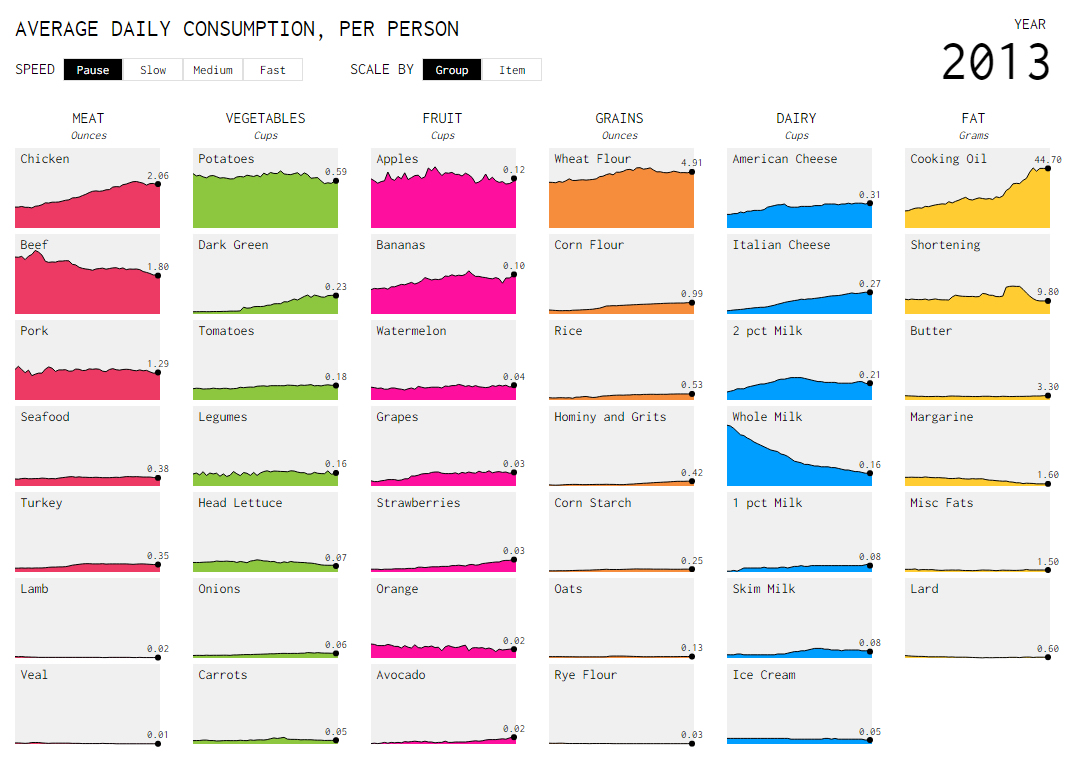According to The Atlanta Heart Association, the four qualifications of having a healthy lifestyle "moderate to vigorous exercise for at least 150 minutes a week”, body fat percentage under 20 percent, being a non-smoker, and a 40 percent diet score, or healthy eating index(HEI), which is a scale measure of diet quality that assesses conformance to the Dietary Guidelines of Americans. The great news is that the smoking rate has dropped 18 percent since 2009 and continues to decline. However Americans are still plagued with a different addiction – unhealthy eating. For many, these findings cause questions about what can be done to alleviate the problem.
These findings are not to be confused with a total lack of exercise and all around rejection of healthy food, as some Americans are choosing to hit the gym more frequently and eating more produce. The millennials and Gen Z generations are projected to increase their organic and fresh food consumption through 2019. Only 20.1% of millennials are considered obese in comparison to their counterparts, non-millennials who make up 32.5 percent of obese Americans, according to Gallup.
The small health efforts of U.S. residents may still not be enough to balance out overall eating habits. And obesity seems to plague the U.S. despite more produce intake and working out. According to the CDC,"just 21% of U.S. adults are meeting the physical activity guidelines for both muscle-strengthening and aerobic activity."
"Less than 3 percent of Americans live a healthy lifestyle" according to a new study published in Mayo Clinic Proceedings.
While some foods have maintained their place on the popular foods among U.S indulging, the American diet has transformed greatly over the past few decades. People are consuming more chicken today than in the early 90s when beef was the top meat choice. Cheese has become so prevalent in Americans diet that it is being consumed three times more than in 1970. But Americans are not only eating less healthy or differently than in the past, they are outright consuming more, According to Vos Americans are"eating 500 more calories per day than in the 1970s".
See this demonstration of 40 year food habits evolution here
One may question whether a little chicken here and a bit of cheese there can really tip the scale in difference between healthy eating and unhealthy eating. Western eating for some has come to also include fatty or calorie-rich foods such as red meats, eggs, high-fat dairy products, french fries, pizza, mayonnaise, candy, and desserts. The Western love for fast food helps contribute to these habits.
The World Health Organization reports evidence to support that indulgence in high-fat, low-nutrient foods increases the chance of colon cancer, diabetes, and many other diseases. Americans will need to make swift changes to their diet if they want to see longevity in their health.
What do Americas eating habits mean for the future? What can be done to support a healthier diet and lifestyle?
Restaurateurs, grocers, and other food industry distributors are at the forefront of the effort to offer solutions. Solutions that can be implemented start with healthier menus, organic cooking, smaller portion sizes, and more.
On average, adults eat between 1700 and 2700 calories daily. If American adults are presented with better options, this may help spark a new way of intake. Restaurateurs can help is to offer meals that don’t exceed 500 calories while promoting a healthier combination of menu items. Don’t default to a side of fries – offer fresh vegetables or fruits. Education and awareness is the gateway to helping American’s eat healthier.
The American Heart Association also recommends that sodium intake stays under 1500 mg of sodium per day. Chefs and food service industry professionals can help customers by offering low sodium items in their menus. This is especially true in the QSR industry where prepackaged or ready-to-eat fare is often packed with high amounts of sodium. According to QSR magazine, CSPI researched 17 chains, both full-service and quick-serve, and found that more than 80 percent of the 102 meals examined had more than an entire day’s worth of sodium. A serving of McDonald’s Hotcakes and sausage is 935 mg of sodium.
Many view Hunger-Free Kids Act, championed by Michelle Obama, as a healthy change in school meals that will help raise a healthier generation. As a step in the right direction, the change can help children lead the way in a better future.
There are many studies and documentaries on updating the American diet that can help. TED Studies offers rich educational materials to bring solutions to the forefront. Health.gov published their 8th edition of Dietary Guidelines for Americans 2015-2020 along with their professional resource toolkit.
With the awareness of shortcomings in the Western diet, Americans can begin to delve deeper in the offered solutions and find ways to help offer even more. Ultimately, the change starts with each of us individually to make adjustments to personal eating habits and sharing what we learn with others. If Americans want to continue living long, productive lives we must take these statistics seriously and effect the change where we have the most influence. For restaurateurs that starts with their menu.


